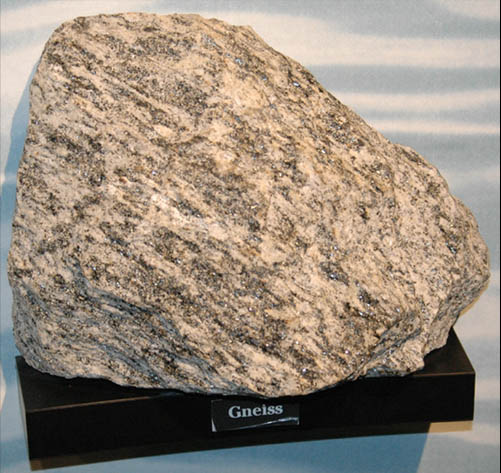Gneiss
Gneiss is a metamorphic rock form characterized by banding caused by segregation of different types of rock, typically light and dark silicates. Rather than an indication of specific mineral composition, the term is an indication of texture. The "gneissic texture" refers to the segregation of light and dark minerals. It is indicative of high-grade metamorphism where the temperature is high enough, say 600-700 °C, so that enough ion migration occurs to segregate the minerals. Within the banded structure are mostly elongated and granular structures rather than sheets or plates. Some gneisses will split along the layers of materials, but most break in an irregular fashion.
Gneiss often forms from the metamorphism of granite or diorite. The most common minerals in gneiss are quartz, potassium feldspar, and sodium feldspar. Smaller amounts of muscovite, biotite and hornblende are common. Gneiss can also form from gabbro or shale.
rock | rock | ||
| Gneiss | Foliated | Shale, granitic and volcanic rocks | Coarse-grained, non-micaceous |

This example of gneiss is from Warm Springs, Georgia where a stressed formation produces it along with quartzite and schist, two other metamorphic rocks. The formation produces a large warm spring.
| Gneiss Examples |
Reference
Lutgens and Tarbuck
Ch 7
| HyperPhysics*****Geophysics | R Nave |